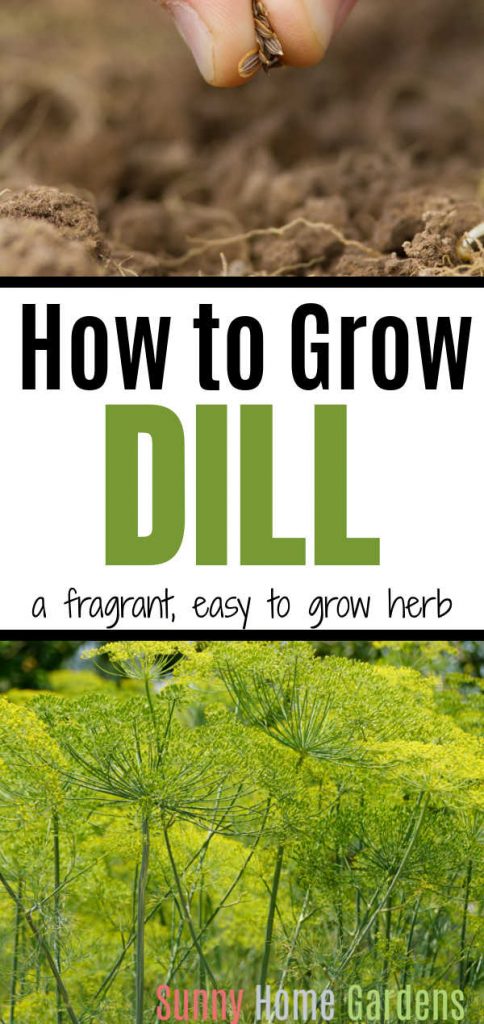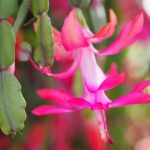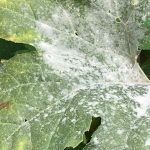Wondering how to grow dill in your garden? You’ll find it’s easy to grow and you’ll love having fresh dill for pickling and using in your cooking.
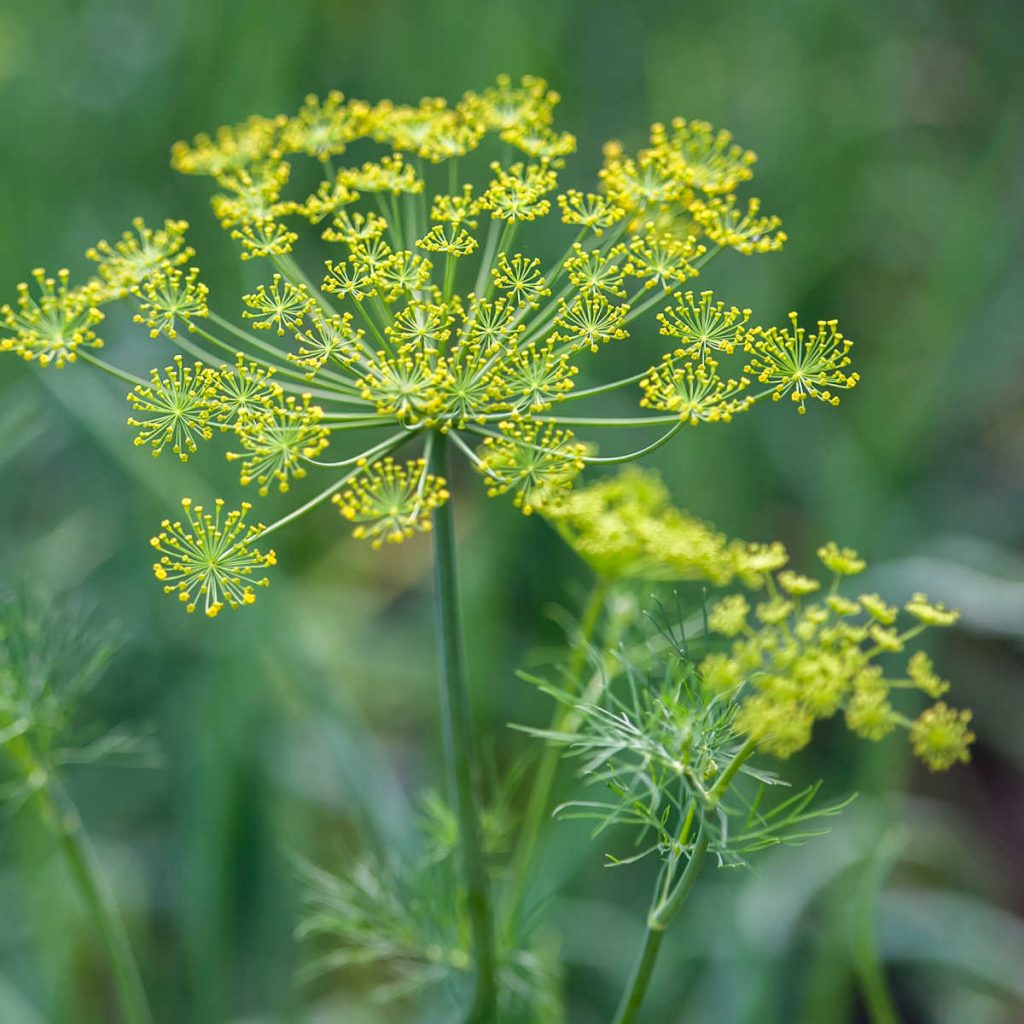
I love the smell of dill in my garden!
I also love using dill in my cooking and canning.
Anethum graveolens, aka, Dill, is a perennial herb that typically grows to about 2 – 4 feet tall when fully mature.
While the plant’s exact origin isn’t certain, it’s believed that the herb is native to the Mediterranean, Western Africa, and Russia – places where the herb was used to prepare local cuisine.
The herb belongs to the Umbelliferae family, which includes plants such as parsley and cumin.
While the plant’s genus name (Anethum) is derived from a Greek word that means ‘strong smelling’, its English term refers to the plant’s medicinal use.
The herb was traditionally used as a carminative – helps reduce or prevent flatulence.
Essential oils can be extracted from both the leaves and seeds and have been shown to have antioxidant, antimicrobial, and antifungal properties.
An interesting thing to note about “Anethum” is that it’s also mentioned in the Bible.
Since dill was used as a spice in ancient Egypt, its culinary use can be dated as far back as five millennia ago.
Table of Contents
Soil Requirement and Preparation
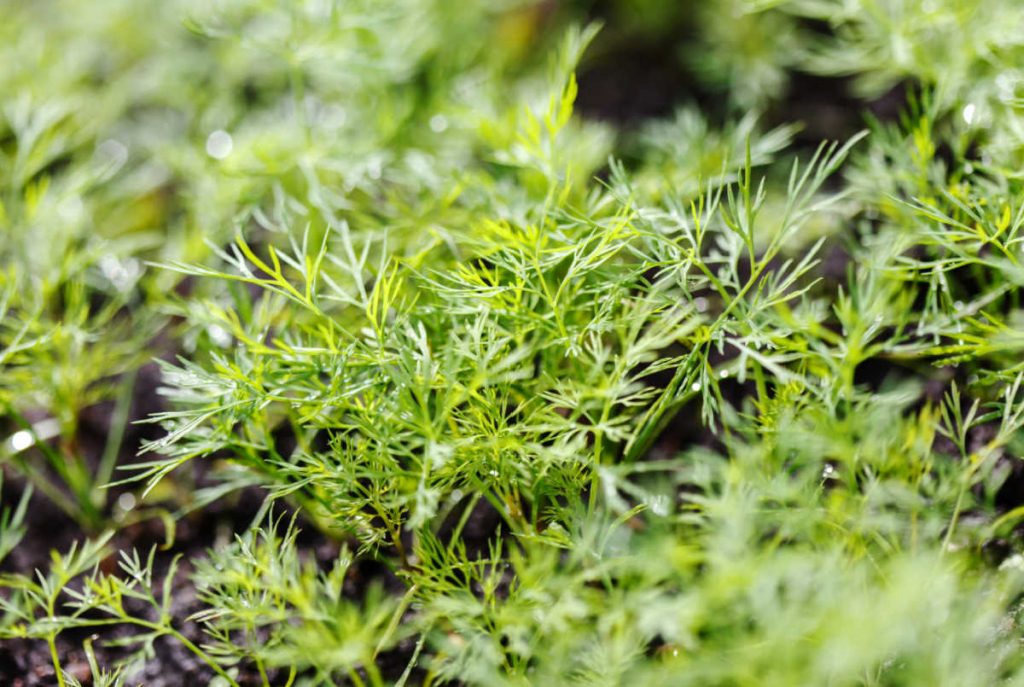
While dill does well even in poor soil conditions, it thrives in well-drained, loamy, or sandy soil that’s slightly acidic (within a pH range of 8.8 to 6.5).
The soil’s temperature must range at about 70 degrees Fahrenheit.
For the best results, make sure you prepare the soil before planting dill seeds.
All you need to do is add some compost to your soil, mix it, and then even out the surface before wetting it down a bit.
How to Sow Dill Seeds Directly in the Ground
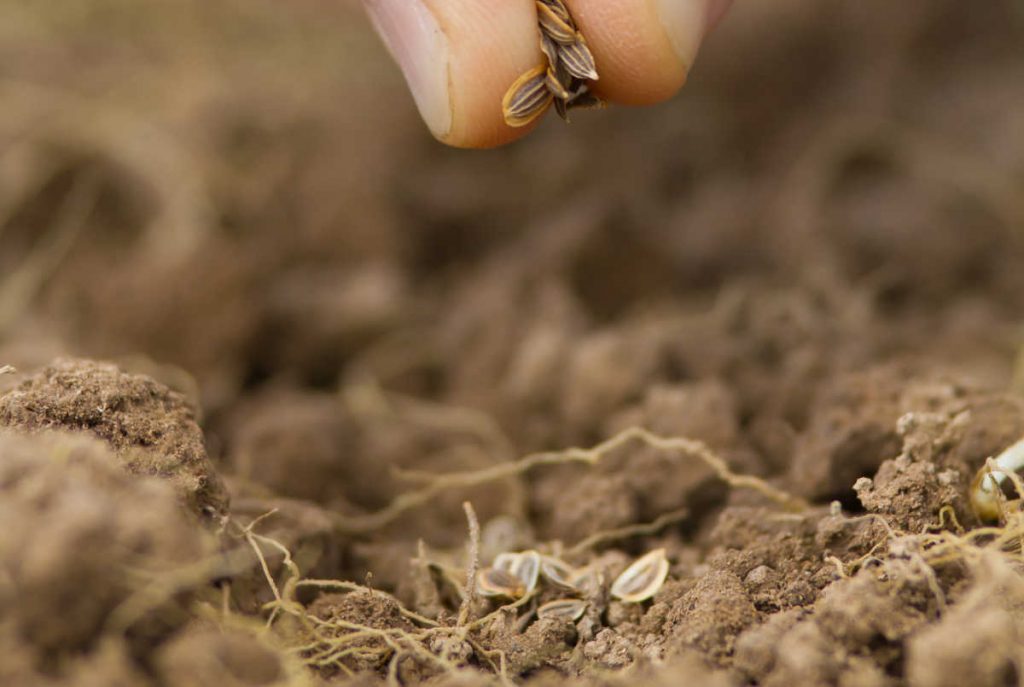
If you plan on sowing dill seeds in the ground, make sure you do it in spring – once the threat of frost has passed.
Since the herb puts down a taproot, it does not transplant very well; therefore, don’t attempt to transplant the plant once it’s sprouted.
Dill seeds should germinate in about ten to fourteen days.
The seedlings should be planted three-quarters (3/4) to (1) one-inch deep and from (12) twelve to (15) fifteen-inches apart.
Plant the herb in full sunlight and protect it from strong wind gusts.
Once mature, the herb can survive temperatures as low as 25 degrees Fahrenheit.
Growing Dill in Containers
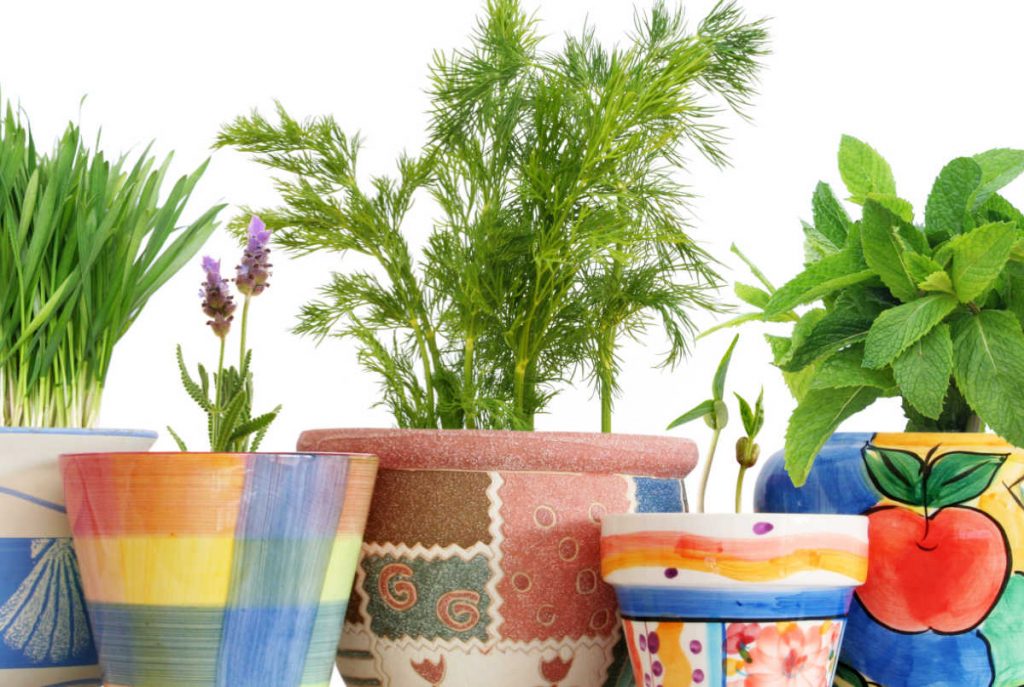
The herb can also be propagated in containers, both outdoors and indoors. To grow your dill in a container, make sure the container(s) you choose is deep enough to accommodate the plant’s long stem and roots.
To ensure your plants get enough nutrients, add normal potting compost to your soil and make sure you water them well.
If you plan on keeping the container indoors, place the pot in a spot where the plants enjoy at least 5 – 6 hours of unobstructed sunlight every day.
You might need to support your Dill with a stake.
Your herbs should be ready to harvest within about eight weeks of sowing your seeds.
Water Requirements
While Dill is quite a drought-tolerant plant you still need to ensure that your plants get about one-inch of water each week.
Sun Requirements
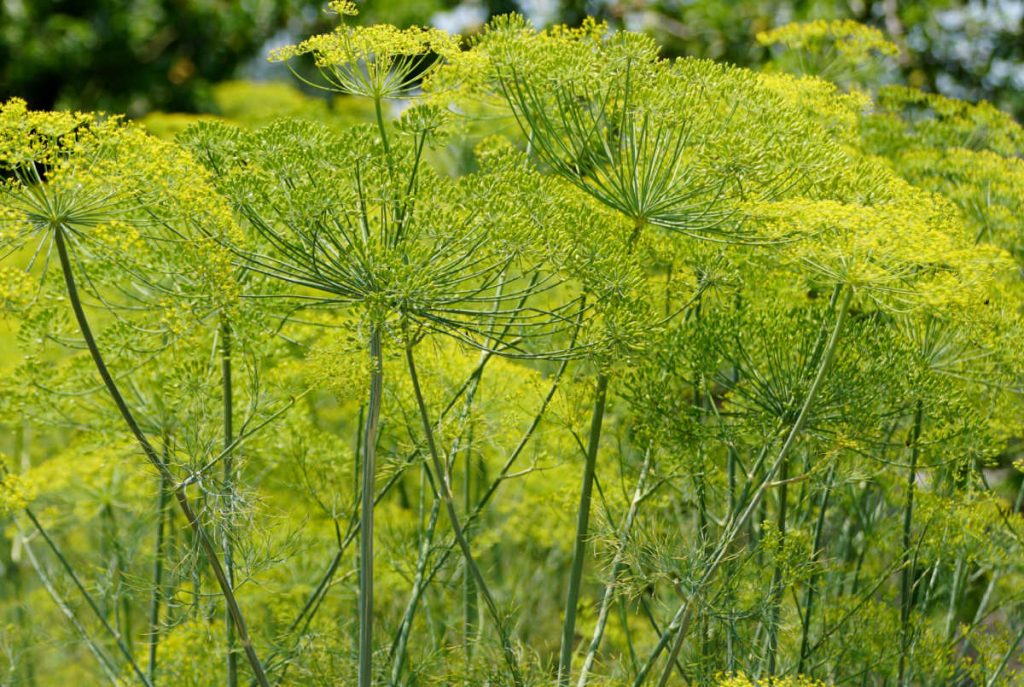
As we’ve already seen, Dill grows best in locations where it is fully exposed to sunlight for at least 5 to 8 hours a day.
While you could still grow the plant in a partly shaded location, the problem is that the plant’s stems won’t be as sturdy as you’d like; meaning you might have to stake it.
Fertilizer
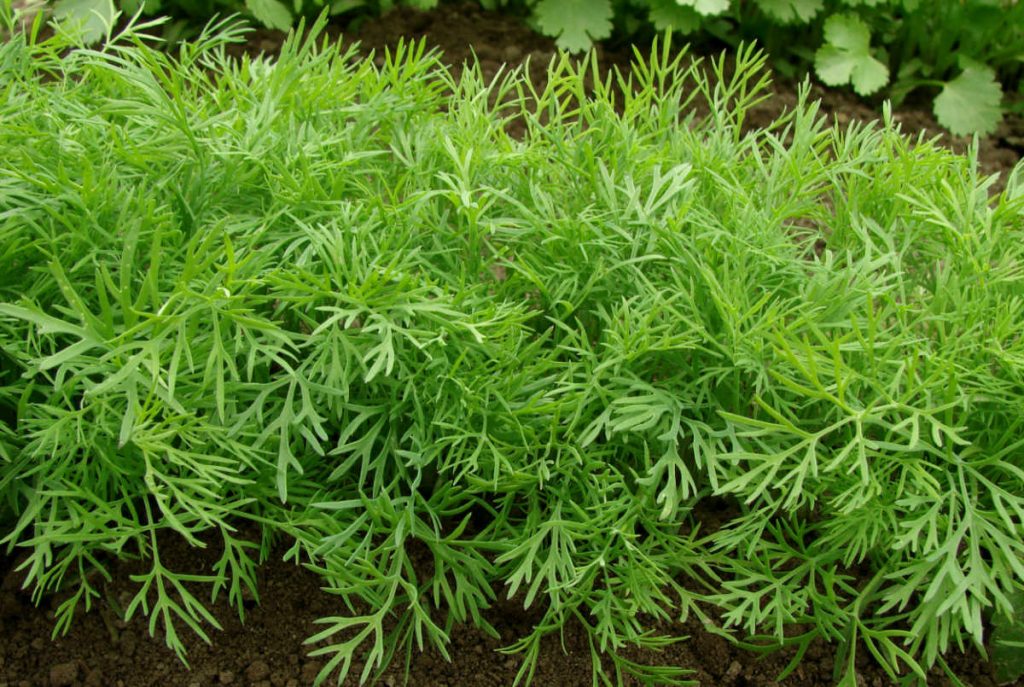
Fertilizer may be applied to the surface of the soil throughout planting or as a side-dressing (i.e., applied to the ground around or on the sides of your dill.) Never apply fertilizer directly with your dill seed.
Generally, apply a formulation like 20-20-20 one time towards the end of spring at the rate of .70 lbs. of fertilizer/100 sq. ft.
Triple-20 fertilizer is generally used by growers because it’s readily available in most local garden centers.
A better approach that does not involve the application of too much phosphorous is the 15-15-10 formula. With this option, you apply 1 lb. of fertilizer/100 sq. ft. This option is also available at most local garden centers.
Pests and Diseases
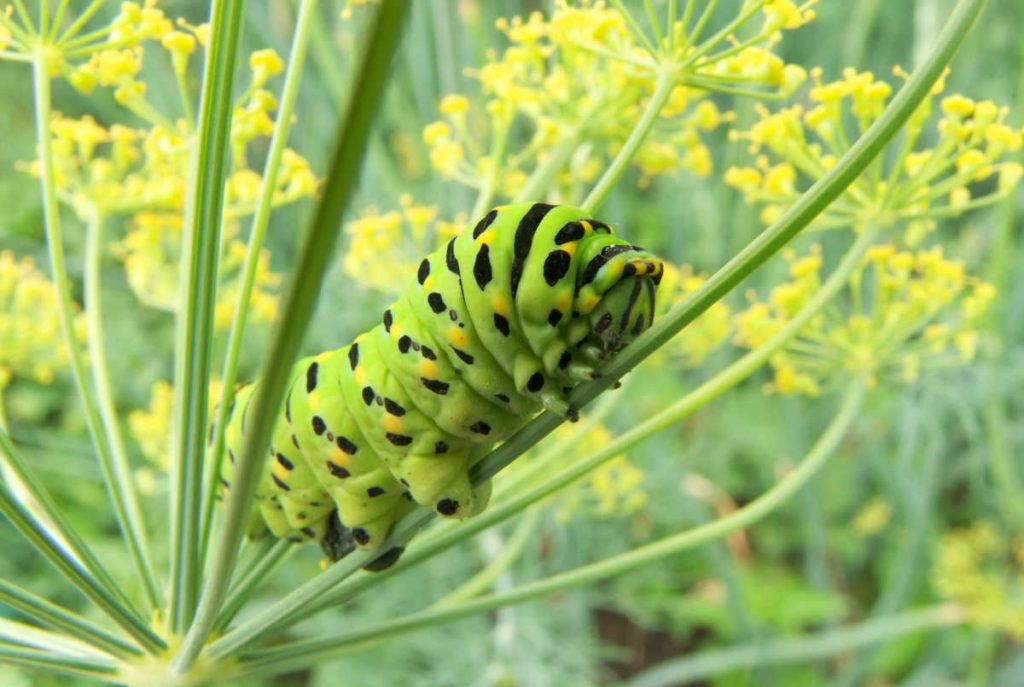
The good thing about Dill is that it’s not that susceptible to diseases and pests.
While aphids may prove to be an issue (though it rarely happens), once the plant flowers, it attracts ladybugs, which eat up all the aphids.
The herb also attracts butterflies, including the impeccable black swallowtail. Though these caterpillars aren’t that much of a threat, still consider transferring them to less valuable plants they can munch on instead.
You can prevent most diseases by avoiding growing your dill in overly humid or wet conditions.
Also, make sure the soil is well-drained and do not overwater the plants. Making sure your plants have enough space between each other to improve airflow is another way to help prevent disease.
Dill grown in humid climates is more susceptible to diseases than that grown in arid climates.
Common diseases that are known to affect dill include:
• Carrot mottle virus
• Carrot Redleaf virus
• Carrot motley dwarf
• Cercospora leaf blight
• Downy mildew
• Root rot
• Powdery mildew
Dill Growing Tips
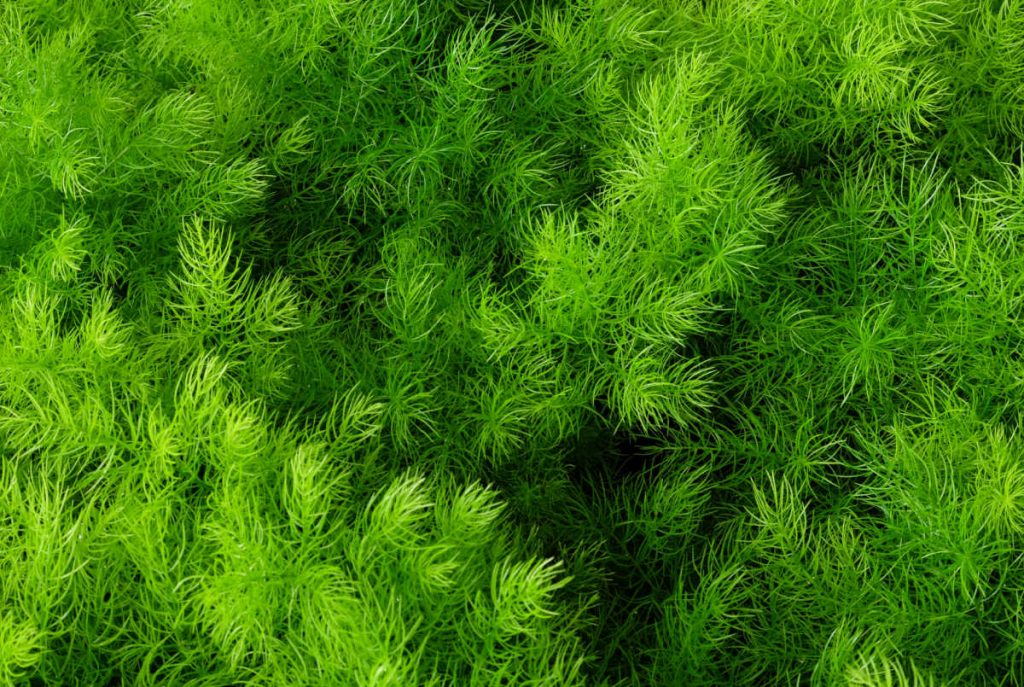
Dill is probably one of the easiest herbs to grow – plants that self-seed without a problem are generally flexible by nature.
However, to help make sure your dill grows without any issues, here are several tips for you to consider.
- Dill grows best when soil temperature ranges around 70 degrees Fahrenheit. Hot temperatures might cause the plant to bolt.
- Sow dill seeds every two to three weeks for a constant supply of the herb.
- If you plan on growing the herb in containers, make sure the pots you use are at least twelve inches deep to ensure the plant’s roots have ample room to develop.
- Pluck off flower heads as soon as they appear to encourage the production of foliage; however if you’d like to harvest seeds, leave them alone.
- Avoid growing dill next to plants of the carrot family to keep diseases from spreading and to discourage pests.
- Grow dill with companion plants like onions, leeks, garlic, and soybeans.
Dill self-seeds annually and without too much of an issue.
If you’d like to have the plant self-perpetuate but not just anywhere, consider planting it in a dedicated bed and get rid of any seedlings that grow elsewhere around your garden.
If you don’t want the herb to self-seed, cut off any flower heads while still yellow to keep mature seeds from forming.
Harvesting Dill Seeds and Leaves
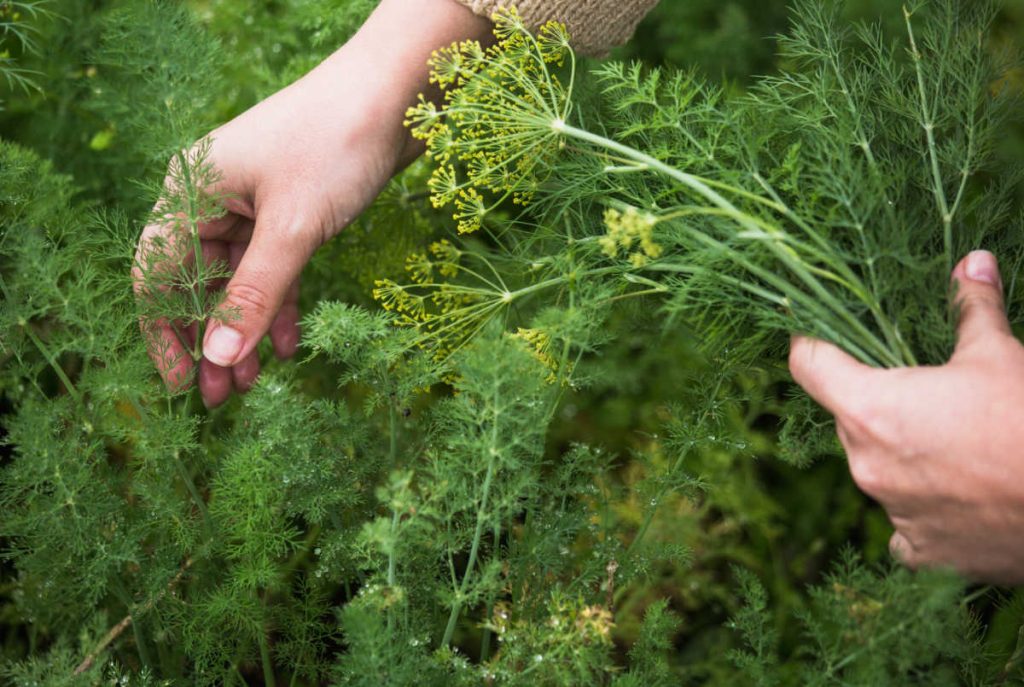
If your reason for planting dill is to harvest dill seeds, avoid cutting too much foliage.
Taking a few branches now and then when needed is okay; the important thing is that you leave most of them on the plant so they can develop into seeds.
If you’d like to harvest both seeds and fresh leaves from your dill, consider thinning your rows and use them for fresh use.
As your dill grows, pick a portion from your rows for thinning or to cut for fresh use.
Dill seeds are generally ready for harvest when they start browning and are just about to fall off. Once you have harvested your seeds, let them dry naturally in a well-ventilated, shaded area for one to two weeks. Once they’ve dried, store your seeds in an air-tight container until you are ready to use them. If you store dill seeds before they’ve dried completely, you increase their chances of developing mold while in storage.
Since dried dill foliage is flavorless, consider getting your fill while the leaves are still fresh or freeze it for future use.
If you found this post helpful, I’d love for you to “Pin it‘!
